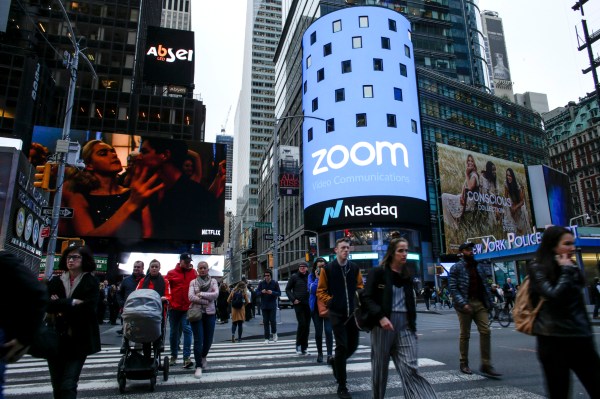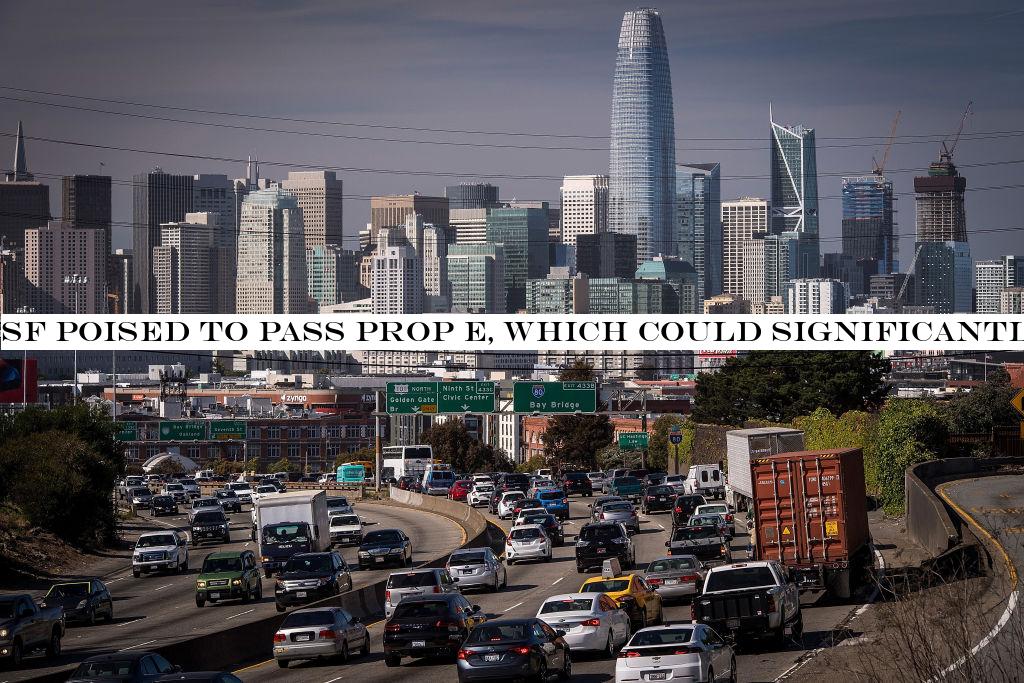Music
Trailers
DailyVideos
India
Pakistan
Afghanistan
Bangladesh
Srilanka
Nepal
Thailand
Iraq
Iran
Russia
Brazil
StockMarket
Business
CryptoCurrency
Technology
Startup
Trending Videos
Coupons
Football
Search
Download App in Playstore
Download App
Best Collections
Technology

Boosted, the startup behind the Boosted Boards and, more recently, the Boosted Rev electric scooter, has laid off &a significant portion& of its team, the company announced today. The company is now actively seeking a buyer.
Boosted attributes the layoffs to the costs of developing, producing and maintaining electric vehicles and the &unplanned challenge with the high expense of the US-China tariff war,& Boosted CEO Jeff Russakow and CTO John Ulmen wrote in a blog post.
&The Boosted brand will continue to pursue strategic options under new ownership,& they wrote.
Boosted, which got its start back in 2012, made its first foray outside of electric skateboards last year with the launch of an electric scooter. Boosted says more than 100,000 riders have traveled tens of millions of miles on the companyvehicles.
&We are extremely proud of what our company has accomplished, and gratified to see so many happy customers riding their Boosted vehicles every day,& Russakow and Ulmen wrote.
This perhaps should not come as a surprise. For starters, micromobility is a hard business — one that no company can confidently say it has cracked. Meanwhile, The Verge reported earlier this month that the company was at risk of running out of money. On top of that, Boosted reportedly struggled to pay its vendors for the electric scooter.
&To Boostedcustomers and community, we&d like to thank you for your passionate support and encouragement over the last nine years,& Ulmen and Russakow wrote. &Itbeen the thrill of our lives to spend time with you and help shape the future of mobility together. To the Boosted team, you made this company a special place, created multiple generations of incredibly innovative products, and created a compelling global brand; thank you so much for your hard work and dedication over the years.&
- Details
- Category: Technology Today
Read more: Boosted lays off ‘a significant portion’ of team as it looks for a buyer
Write comment (95 Comments)
Today after the bell, Zoom reported its Q4 earnings. The companyrecorded revenue of $188.3 million and its adjusted per-share profit of $0.15 were ahead of expectations, including $176.55 million in revenue and earnings per share of $0.07, according to Yahoo Finance averages.
Down several points during a broad market rally, Zoom has been a hot company to track in recent months. Its profile was heightened due to its position as an incidental benefactor of the worldgrappling with the novel coronavirus — as more countries and companies stressed staying home and working remotely, respectively, Zoomvideo conferencing tool was expected to see rising usage and demand.
The companyshares were down sharply after reporting its earnings.
What follows is a dive into ZoomQ4 earnings, its expectations for the coming period and what those figures may have to say about the infection and its impacts. We&ll wrap with notes from startups that are building remote-work friendly products, sharing what they are seeing on the ground regarding demand for their services during this bleakly fascinating period of history.
Q4 and the future
- Details
- Category: Technology Today
Read more: Despite earnings beat and upbeat forecast, Zoom shares fall after reporting Q4 results
Write comment (90 Comments)
San Francisco is poised to pass a controversial proposition that would almost certainly limit further office space development in the city, perhaps pushing more tech companies and startups to set up their HQs elsewhere.
Prop E‘s passing, which seemed likely Wednesday afternoon following Tuesdayelection, ties office development approval to the cityability to meet affordable housing goals, something that the city and its developers haven&t proven themselves all that capable of doing in recent years. Amid skyrocketing rents and a homeless crisis, therebeen ample concerns that the structures in the city are being overstressed, low and moderate income residents are being pushed out and that the influx of tech startups is exacerbating the problem.
San Francisco had already been operating under voter-imposed annual limits for new office space via Prop M, a 1986 ballot measure that has limited annual office space allocations to 875,000 square feet of large office space (defined as a building with more than 50,000 square feet). Prop E ties this office space maximum to regionally determined affordable housing goals, ones aimed much higher than San Francisco has been able to hit in recent years.
In the past decade, SF has built an average of 712 affordable housing units per year, according to the chief economistreport. In the past 20 years, San Franciscoannual affordable housing production has popped above 1,000 units only once. The latest goals, set by a state program, pin annual affordable housing production at 2,042 units per year. With Prop E, if San Francisco fell short of that annual goal, only building one-third of those 2,042 units, they would also only be able to allocate one-third of its 875,000 large-space square footage to new large-space projects.
Scarcity in office space has been a consistent issue for startups in SF. Last year, Stripe, one of the worldmost highly valued startups, cemented plans to leave San Francisco, citing the scarcity of office space in the city as part of its decision to leave, the San Francisco Chronicle reported.
Mayor London Breed did not support Prop E, and the cityown chief economist estimated Prop E would go on to cost the city tens of millions of dollars in revenues and thousands of jobs per year, limiting the cityGDP growth by tens of billions over the next 20 years. The report didn&t mince words: &By tying future office development to an affordable housing target that the city has never met, the proposed measure is likely to lead to high office rents, reduced tax revenue, reduced incomes and reduced employment across the cityeconomy.&
Proponents of the measure have hopes that tying office space allocation to affordable housing production will push major developers in the city to encourage affordable housing rather than standing in its way. The proposition was supported by the bulk of SFBoard of Supervisors, many of whom have notably taken efforts to limit affordable housing production in their own districts.
Prop E was sponsored by TodCo, an SF organization that owns nearly 1,000 affordable housing units in the SoMa neighborhood, an area that is often the center of the cityoffice space development, affordable housing development and homelessness crisis. In an interview with SF Public Press, TodCodirector of community engagement Jon Jacobo pushed back on the cityreport, saying, &Itnot a doomsday scenario, instead of 50 percent growth, we&re going to get maybe 38 percent growth.&
The vote to pass Prop E currently has the support of 55% of SF voters with 100 precincts reporting — though there are still a number of mail-in ballots to be counted, which could affect outcomes.
- Details
- Category: Technology Today
Across the U.S., sustainable microgrids are emerging as a vital tool in the fight against climate change and increasingly common natural disasters. In the wake of hurricanes, earthquakes and wildfires, the traditional energy grid in many parts of the country is struggling to keep the power flowing, causing outages that slow local economies and ultimately put lives at risk.
Microgrids — power installations that are designed to run independently from the wider electricity grid in emergency situations — have been around for decades, but until the turn of the century, relied almost exclusively on fossil fuels to generate power. While ittaken another 20 years for solar panels and battery storage costs to fall far enough to make truly sustainable microgrids an economic reality, a recent surge in interest and installations have shown that they&ve reached an inflection point and could very well be the future of clean energy.
Take Santa Barbara, where the Unified School District voted unanimously in November to allocate over $500,000 to study and design microgrid installations for schools around the county. A preliminary assessment by the Clean Coalition identified more than 15 megawatts of solar generation potential across 18 school sites.
These solar-plus-battery-storage microgrids would greatly enhance the ability of chosen schools to serve communities during natural disasters or power outages, like the ones induced by CaliforniaPG-E electric utility that affected hundreds of thousands of residents last October. The sites will provide a place to coordinate essential emergency services, store perishable food and provide residents with light, power and connectivity in times of distress.
A completed feasibility study for the microgrid installations is expected in June, and while initial estimates put the final cost around $40 million, long-term power purchase agreements (PPAs) will allow the school district to have the sites set up for free and paid for over time via its normal electric bill — at a cost no greater than grid power. Agreements like these have only become economically viable in the last few years as renewable energy generation costs have continued to fall, and are a major driver of the microgrid boom.
At the end of January, Scale Microgrid Solutions received a commitment for $300 million in funding from investment firm Warburg Pincus. Microgrids today are typically designed and installed to the unique specifications of individual customers. Scale Microgrid Solutions instead provides modular microgrid infrastructure built using shipping containers that combine solar and battery storage with control equipment and backup gas generation.
These modules enable faster deployment and provide a viable option for customers or institutions seeking microgrid capabilities in the $15 million price range. The first modular microgrids were launched in May 2019 with financing provided by Generate Capital, a financing firm focused on advanced, clean-energy technology investments.
Meanwhile, on the opposite side of the country, successive disasters are already proving the value of solar-plus-storage microgrids in Puerto Rico. In 2017, Hurricane Maria catastrophically damaged the centralized electricity grid in the U.S. territory and left many without power for more than a year.
A project funded by the Rocky Mountain Institute, Save the Children and Kinesis Foundation installed solar-plus-battery-storage microgrids at 10 schools in the mountainous central regions of the island, designed to provide energy for on-site libraries, kitchens and water pumps indefinitely during power outages. The installations were completed in December 2019, just weeks before a series of earthquakes that began in January endangered the islandalready sluggish economic recovery. The RMI Island Energy Program told Microgrid Knowledge that while grid power around several of the sites had gone down, the microgrids had continued to operate successfully and provide critical services.
Microgrids go beyond schools though. Several communities are also linking solar-and-storage systems mounted on their homes, employing inverters and controllers that have only become efficient and affordable in the last few years to create &community microgrids& that share power among the participants to supplement or replace grid energy.
In January,Australian startup Relectrify closed $4.5 million in Series A funding to continue refining their inverter and battery-management technology that increases battery lifespan by as much as 30% while reducing operational costs. Relectrify tech also allows large batteries from electric cars — including Teslawildly popular offerings — to be repurposed after they are no longer reliable enough for use in EVs, opening up an enormous pool of second-hand batteries to be repurposed for growing microgrid storage demand.
Programs like these are attractive not just because they offer resilience and independence from grid power often produced with fossil fuels, but because they are increasingly the cheaper option for energy consumers. Residential retail energy prices in Puerto Rico were as high as 27 cents per kilowatt hour (kWh) in 2019, while the calculated cost from home solar-plus-battery-storage systems fell as low as 24 cents in good conditions.
The cost of solar installations has plummeted 90% in the past decade according to the research firm Wood Mackenzie. At the same time, the early effects of a warming climate and associated natural disasters have started to take a toll on American energy infrastructure already struggling to keep pace with regular maintenance and demand growth. Impacted communities have already seen the value of microgrids and are racing to adopt them, even as many larger utility providers look to natural gas or other partial solutions that rely on the aging centralized power grid.
The greatest impact of these early sustainable microgrids may reach beyond the emergency power they provide to nearby residents. They offer a glimpse of a radically different way for communities and energy consumers to think about how power is produced and used. In community microgrid systems, residents have a concrete, practical connection to their source of energy and are asked to work together with their friends and neighbors to control their energy demand so there is enough to go around.
Such a system stands in stark contrast to the power grid of today, where peak demand facilities are routinely called upon to burn some of the most environmentally harmful fuels to accommodate demand with few if any social or technological limitations. Sustainable microgrids are finally becoming truly affordable, and in the process are beginning to change the way we think about energy consumption and resilience.
- Details
- Category: Technology Today
Read more: Sustainable microgrids are the future of clean energy
Write comment (91 Comments)
While the aftermath of Super Tuesday has left the Democratic Party riven between its more liberal and moderate wings, investors viewed last nightresults as a win for business and markets.
Shaking off the steady beat of bad news about the advance of the novel coronavirus COVID-19 within the U.S., major markets rose on Wednesday following the news of Joe Biden surge to the front of the Democratic Primary pack on Super Tuesday.
The Dow Jones Industrial Average was up a whopping 1,173.45 or 4.5% to close at 27,090.86, while the Nasdaq was up 334 or 3.85% to close at 9018.09 and the S-P 500 was up 126.75 or 4.22% to 3130.12.
Bidenmoderate position contrasts with the more liberal policies endorsed by Vermont Senator Bernie Sanders . Sanders& positions on how to combat climate change and reshape the healthcare industry diverged sharply from the incrementalism that Joe Biden promoted, both as vice president and on the campaign trail this year.
Itbeen a rocky road for the major stock indices, but over the past few days investors& fears about the economic impact of the coronavirus seem to have stabilized as the U.S. government begins to take more decisive action.
Since hitting their troughs of the year on Friday, the Dow has risen 1,681.50 points, the Nasdaq is up 748.35 points and the S-P 500 is up 265.20 points — buoyed in part by todaynews.
Techbiggest companies, including Alphabet, Amazon, Apple, Facebook and Microsoft, all saw their stocks rise on a day that the market soared. Health insurance companies and pharmaceuticals were among the daybig winners buoyed both by the Biden victory and new congressional cash coming from the U.S. government to finance the development of tests, treatments and potentially vaccines for the new coronavirus.
- Details
- Category: Technology Today

Itthe best and worst of times for travel startups.
Massive growth over the past few decades has made tourism one of the big global industries, covering everything from recreation to business conferences to shopping sprees.
But doubts about the future of the industry are growing — and not just because of the novel coronavirus and COVID-19. The rise of remote work and the increasing stresses from tourism on urban and environmental systems portends tougher times ahead.
Given the spate of bad news the past few weeks swirling around global tourism startups, I wanted to go over where we are and what the future holds — and why thatgoing to be so challenging for startups in this space.
- Details
- Category: Technology Today
Page 1324 of 1441

 7
7





